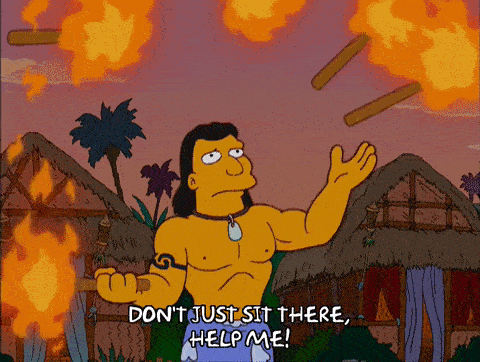#02 A Guide To Conducting Stakeholder Interviews
Suffering from misalignment, unclear expectation, difficult stakeholders?
Read time: under 4 minutes
How often have you had to fix misalignments between your project strategy and the expectations and decision-making of stakeholders?
Or have there been times when you had to deal with difficult stakeholders in some complex projects?
The success or failure of any product or project starts and ends with stakeholders. Engaging with stakeholders is indeed a form of risk management.
As an Ex-Head of Product Design, I spent most of my days speaking to different teams in product, engineering, and leadership. One key responsibility of the role was to communicate outside of my design organization. Asking the following questions: What’s your most pressing priority? How can my team help?
When stakeholder engagement is done effectively, it validates the project’s stakes, improves the communication flows between parties, minimises creative blocks, and prevents endless cycles of revisions.
Now, this is where a Stakeholder Interview comes in handy.
Stakeholder interviews are a fundamental step at the beginning of a UX project.
You can use these interviews to help you understand your client's needs, demands, goals, and vision while identifying technical constraints and fostering commitment for the smooth running of the project.
There will be times when you will be faced with stakeholders who are not aligned with the directions or strategy of your project or product, but when you carefully plan and conduct your stakeholder interviews, you might be able to prevent misalignments from happening.
Why is it so important?
When you don't do your stakeholder due diligence properly, you will lose the opportunity to gain valuable insights that can help you pinpoint untapped opportunities, potential, and blockers. You might even run into communication troubles with your stakeholders.
Let’s take the FTX example, albeit slightly extreme. FTX filed bankruptcy after moving customer funds to Alameda research, and reportedly $1 billion of customer funds have vanished.
This is a clear sign of acting on the behalf of their customers without their consent. Similarly, designing on assumptions could lead your client/company to lose money. You do NOT want to make the same mistake!
How to prepare for a successful stakeholder interview
Step 1 - Define your research goals
Identify all the questions regarding the project that you have at the beginning in order to approach selected stakeholders.
Who is the solution for and why do they need it?
What are the significant assumptions we need to clarify?
What are some concerns or constraints you foresee?
Step 2 - Select the stakeholders
Select the stakeholders that you need to interview that will give you insights and context to your research questions. These could be:
Users that will be using this product or service.
Customers that will be purchasing this product or service.
Decision maker who attained approval for the go-ahead of this project.
The team that works on this project, usually a combination of designers, engineers, etc.
Step 3 - Project details
Establish project roles and responsibilities. Solidify what’s involved in the project and the owner of each task.
Project scope
Customer journey map
Proto persona
Solution ideation
Effort vs impact matrix
Who’s doing what
Roles and responsibilities
Deliverables
Step 4 - Interview guide
Prepare a good interview guide that paves the way for a deep, free-flowing conversation with participants. Break them down into 4 sections:
Introduction
Warm-up questions
Project-specific questions
Closing remarks
Step 5 - Practice, practice, and practice!
During the dry run, ask yourself:
Are my questions being adequately answered by the stakeholders?
Did we accidentally use confusing terms or jargon that confused the stakeholders?
How can I improve the flow from one section to another?
Summary
Whether it’s working on projects for small startups or Fortune 500s, I always start with interviews. Gaining context and getting deep into the problem space is the essence of a designer’s role. Clearly articulating the problem holistically is the difference between a senior and a junior designer.
Start fostering commitment and unison to your project and build constructive working relationships by kick-starting conversations with your stakeholders through these interviews.
Whenever you're ready, there are 3 ways I can help you:
1. Junior Designer Bundle: Break into UX industry stress-free with guides to build a kickass portfolio, crush job searching procrastination, nail upcoming interviews, and fundamental UX frameworks. These comprehensive guides will teach you how to get hired for your first UX role. Join designers from 50+ countries here.
2. Senior Designer Bundle: Level-up and become a design leader with systems to help you build a meaningful career and manage your first design team. Join 500+ senior designers.
3. UX Coaching: Get unstuck in your UX career with advice from an Ex-Head of Design. Jump on a 1-hour call to solve your most urgent problems together. Get personalised mentorship here.
I hope you found this helpful.
See ya next week




